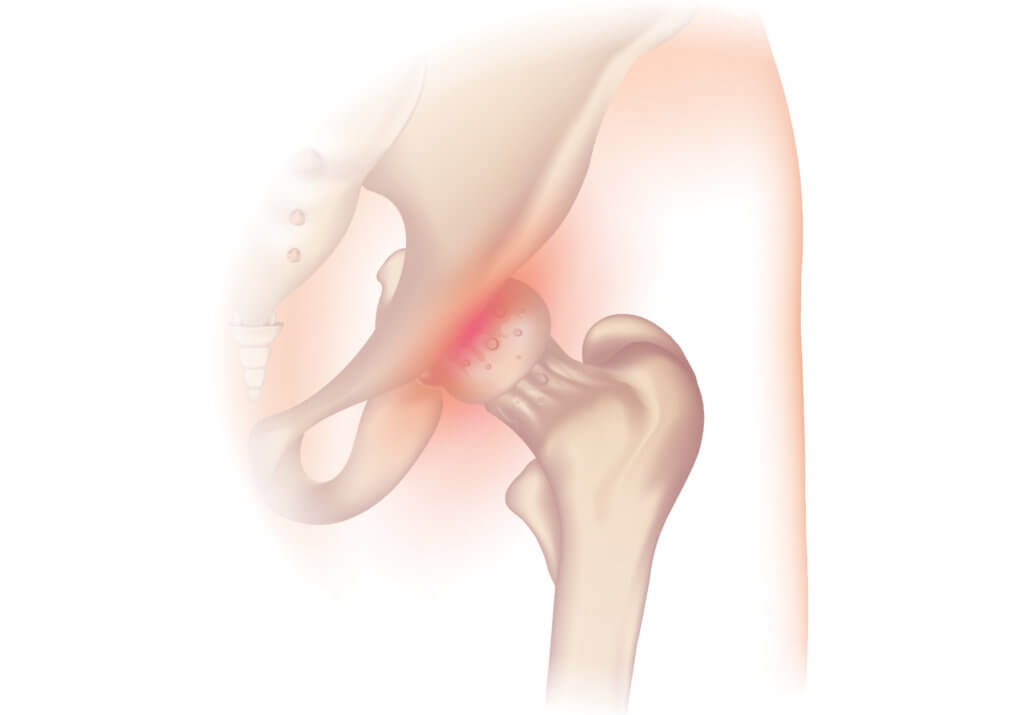Our hip and shoulder joints are a little different than the other, linear joints in our body. These joints are ball and socket joints, which allow us a wider range of motion than our knee and elbow joints.

But it also means there are multiple causes of pain in these joints, particularly as we grow older and these joints deal with more wear and tear.
When it comes to hip pain, one common cause is arthritis. The joint is held together by ligaments and muscles, and cartilage on both the femur and pelvis help to avoid friction between the bones, which can cause pain. When the cartilage gets worn away, this creates arthritis in the hip.
Another common cause of hip pain is bursitis. Shawn Hickling, a physical therapist assistant and the inventor of the ActiveWrap heat and ice packs, explains the role of what are called bursa as a lubricant, or WD-40, for the hip. These fluid-filled sacks are in several locations around the outside of the upper femur, where it connects to the pelvic bone. Shawn goes on to explain that when the bursa becomes inflamed, especially the trochanteric bursa on the outside of the hip, it can cause hip pain.

The hip bursae can become inflamed in a variety of ways, says Shawn:
- Direct impact to the bursa, like through a fall
- Repeated friction from such activities as running or other high-impact exercise
- Poor posture or body mechanics
- Spinal conditions like scoliosis
- Hip bone spurs
This inflammation can make it uncomfortable or painful to lie on your side, to stand up or sit down, or even simply to walk.
There are a few ways to deal with such discomfort. At first, Shawn suggests, change up your activity — avoid doing anything that exacerbates the pain. You might need to limit or cut out high-impact activity for a while, or work out in a pool to reduce the impact on your body. If you’re overweight, losing some pounds will reduce the pressure on the joint.

Another important step to deal with pain is to talk to your physical therapist. Working with a PT to increase your hip strength and flexibility can make the joint stronger and reduce pain. She may also use aquatic therapy, soft tissue massage, and ice or heat with a compress (like those offered by ActiveWrap) to help reduce inflammation and pain.
If you’re looking for a physical therapist to help you with your hip pain, use our locator below to find a Physiquality therapist in your neighborhood.
Thank you to our contributors:

Shawn Hickling, PTA, invented the ActiveWrap® therapeutic wrap in 1994 and has since become founder and president of ActiveWrap, Inc., a Physiquality partner. ActiveWrap offers 6 different wraps designed to fit specific joints and trouble spots, including the hips, targeting your pain with either heat or ice for instant relief.
Mayo Clinic.
- Osteoarthritis: Causes. March 6, 2018.
- Bursitis: Causes. August 12, 2017.
Hickling, Shawn. How to treat hip bursitis and hip pain. ActiveWrap, September 30, 2017.
Gray, Henry. Anatomy of the human body. Bartleby.com.
“Hip osteoarthritis” by Injury Map is licensed under CC BY 4.0.